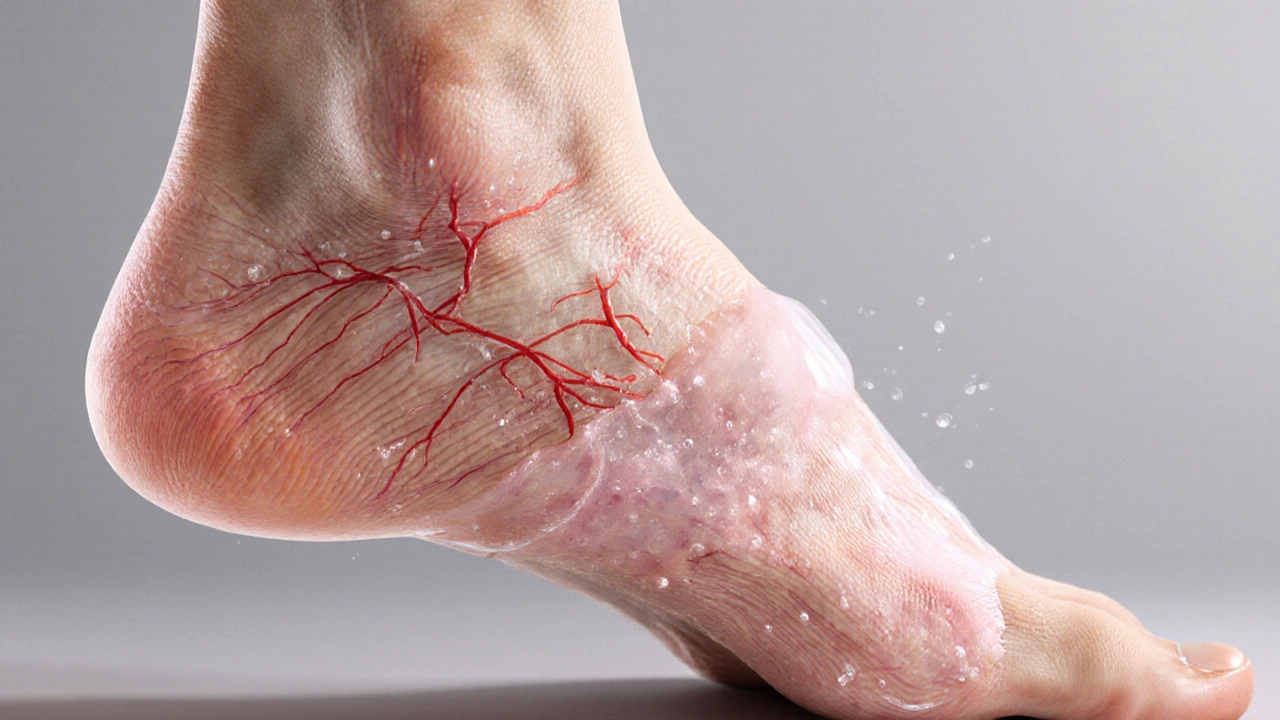
Swelling Type Identifier
Identify Your Swelling Type
Answer the following questions to determine if your swelling is likely inflammatory or non-inflammatory.
Your Swelling Analysis
When your ankle puffs up after a long flight or a minor sprain, you’re experiencing Swelling - a visible buildup of fluid in tissue that can signal anything from a harmless bruise to a serious medical condition. Understanding the swelling causes helps you decide whether a home remedy will do or if you need to call a doctor.
What Actually Happens Inside Your Body?
Swelling isn’t magic; it follows basic fluid dynamics. Blood vessels deliver nutrients and oxygen, then tiny gaps called capillaries let some fluid slip into surrounding tissue - a process known as Capillary filtration. Normally the lymphatic system scoops up that excess fluid and returns it to circulation.
When the balance tips - either too much fluid leaks out or the lymphatics can’t keep up - fluid accumulates and you see the puffiness we call edema.
Two Main Families: Inflammatory vs. Non‑Inflammatory Swelling
Most people lump all swelling together, but medically we split it into two groups.
| Feature | Inflammatory Swelling | Non‑Inflammatory Swelling |
|---|---|---|
| Trigger | Injury, infection, autoimmune reaction | Venous insufficiency, heart failure, low protein |
| Primary mediator | Histamine and prostaglandins | Hydrostatic pressure, oncotic pressure changes |
| Symptoms | Redness, heat, pain, limited motion | Painless, often generalized, may be hard to see |
| Typical treatment | Anti‑inflammatories, ice, elevation | Compression, diuretics, addressing underlying disease |
What Triggers Inflammatory Swelling?
The body’s alarm system releases chemicals the moment tissue is damaged. Histamine widens capillaries, allowing immune cells to rush in. This causes the classic red, hot, painful swelling you see after a twisted ankle or a bee sting.
Prostaglandins and cytokines keep the fire going, which is why NSAIDs (non‑steroidal anti‑inflammatory drugs) such as ibuprofen are effective - they block the enzymes that produce those mediators.
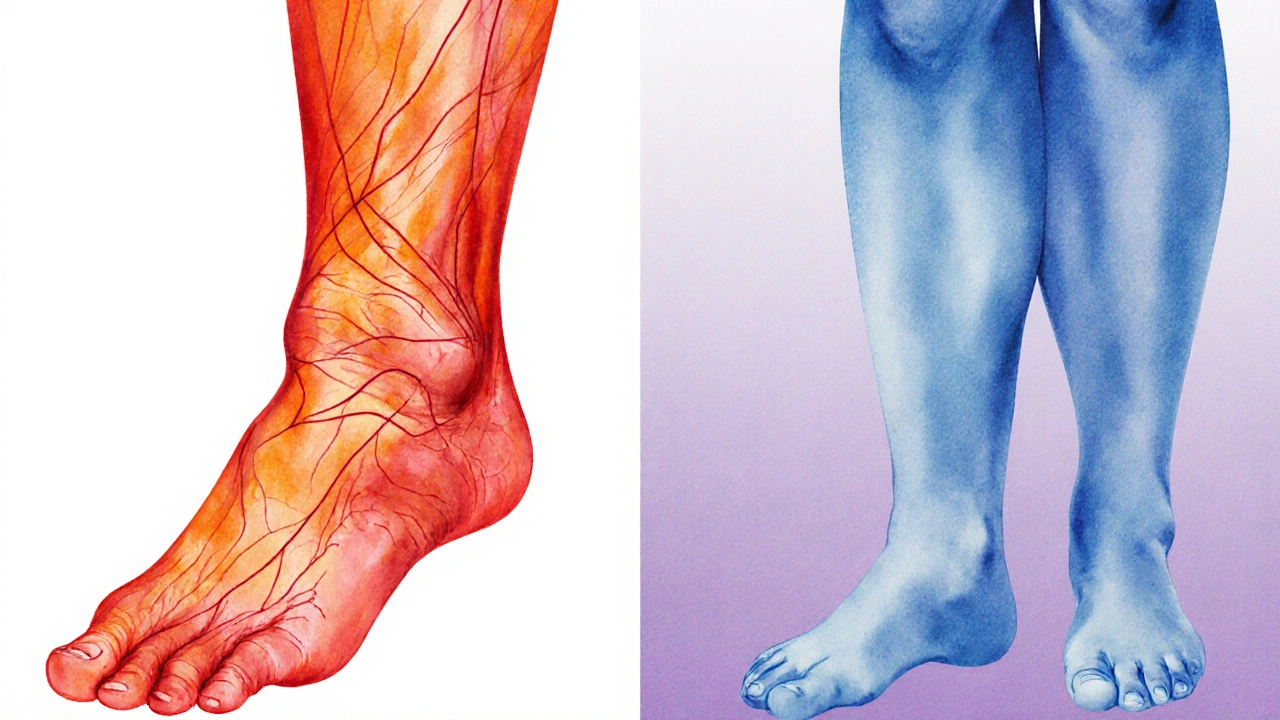
When Swelling Isn’t About Inflammation
Conditions that raise hydrostatic pressure in veins, like chronic venous insufficiency, force fluid out of vessels into surrounding tissue. Heart failure or kidney disease reduces the protein (albumin) that pulls fluid back into blood, leading to generalized edema, often first noticed in the ankles.
The Lymphatic system also plays a starring role. If lymph nodes are removed during cancer surgery or become clogged (as in lymphedema), fluid backs up and creates a persistent, sometimes painful, swelling.
How to Tell If Swelling Needs Medical Attention
- Onset: Sudden swelling after trauma is usually benign; gradual swelling over weeks warrants a check‑up.
- Pain level: Sharp, worsening pain or throbbing that doesn’t improve with rest may signal a deeper issue.
- Associated signs: Fever, redness spreading rapidly, shortness of breath, or chest tightness are red flags.
- Location: Unilateral leg swelling could mean a blood clot; bilateral swelling often points to systemic causes.
If any of the above apply, see a health professional promptly.
Practical Ways to Reduce Swelling at Home
- Elevation: Raise the swollen limb above heart level for 15‑20 minutes, three times a day. Gravity helps lymphatics drain fluid.
- Cold therapy: Apply a cold pack (wrapped in a cloth) for 10‑15 minutes. Cold narrows blood vessels, limiting capillary leakage.
- Compression: Use Compression therapy bandages or stockings that provide graduated pressure. This encourages fluid to move back toward the core.
- Movement: Gentle range‑of‑motion exercises activate the muscle‑pump mechanism, pushing fluid through veins and lymphatics.
- Hydration and diet: Adequate water helps maintain plasma volume; reducing excess salt limits fluid retention.
- Over‑the‑counter NSAIDs: If inflammation is the culprit and you have no contraindications, a short course can curb pain and swelling.
When Professional Treatment Is Needed
Doctors may prescribe diuretics for fluid overload, refer you to a vascular specialist for chronic venous disease, or suggest physical therapy focused on lymphatic drainage. In cases of infection, antibiotics are required, while severe inflammation from autoimmune disease might need steroids or disease‑modifying agents.
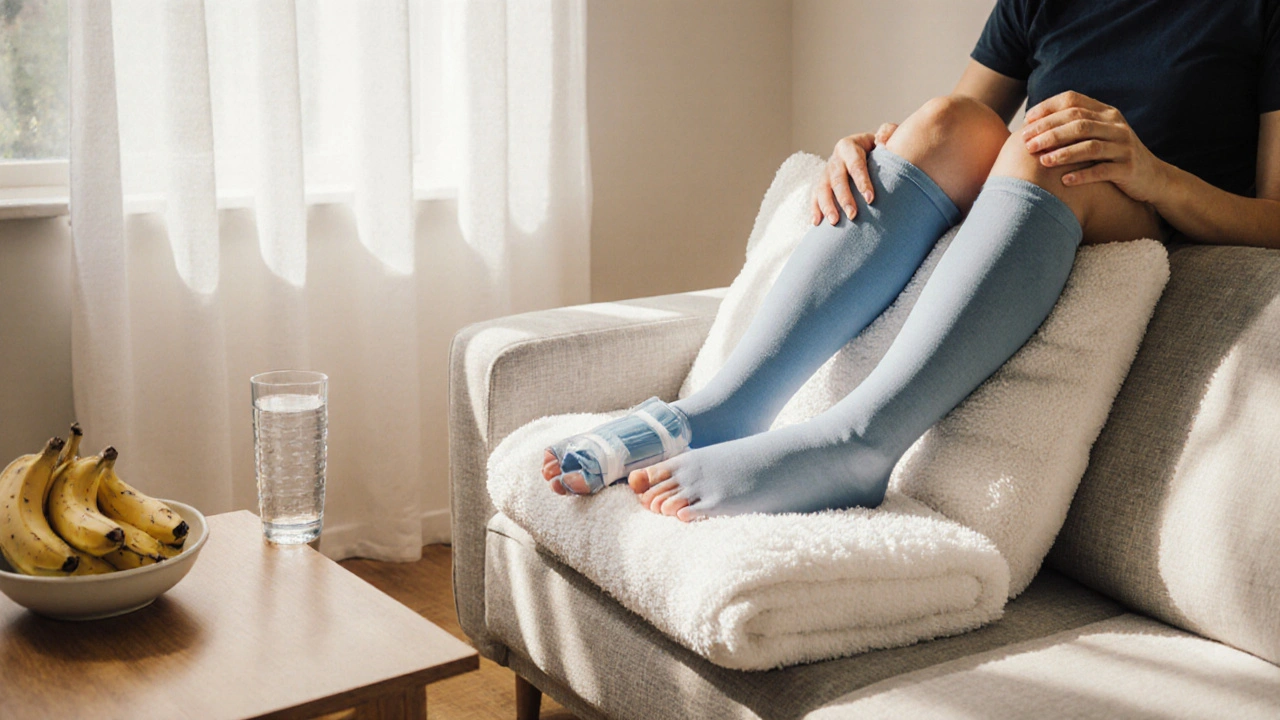
Frequently Asked Questions
Why does my ankle swell after a long flight?
Prolonged sitting compresses calf muscles, reducing the muscle‑pump action that pushes blood back to the heart. This raises venous pressure, causing fluid to leak into ankle tissue. Moving your feet, flexing calves, and wearing compression socks can prevent it.
Can drinking more water really help reduce swelling?
Yes. When you’re dehydrated, the body holds on to sodium and water, increasing plasma osmolarity. Adequate hydration promotes normal kidney function and helps maintain the proper balance of fluid across blood vessels, reducing the tendency to retain excess fluid.
Is swelling always painful?
No. Inflammatory swelling is usually painful due to nerve irritation, but non‑inflammatory edema-like that caused by heart failure-can be painless and only visible as a slight puffiness.
When should I suspect a blood clot?
If swelling appears suddenly in one leg, is accompanied by warmth, redness, and a feeling of heaviness, and you have risk factors like recent surgery, long‑distance travel, or a history of clotting, seek emergency care. A Doppler ultrasound can confirm the diagnosis.
Can diet alone cure edema?
Diet helps but isn’t a cure for underlying disease. Cutting sodium, eating potassium‑rich foods, and staying hydrated can lessen mild, diet‑related fluid retention, but conditions like heart or kidney failure need medical management.

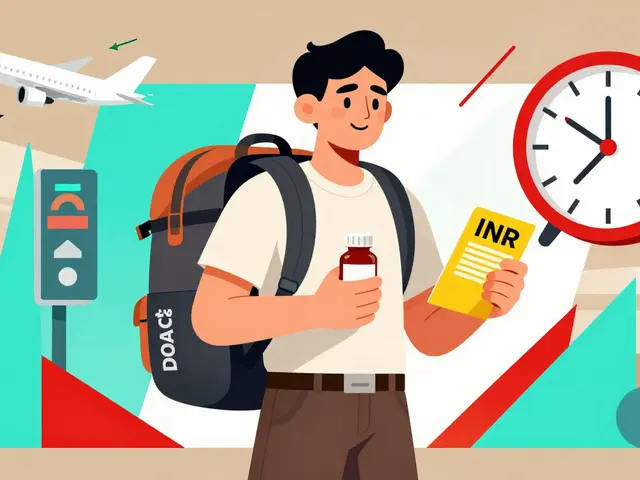

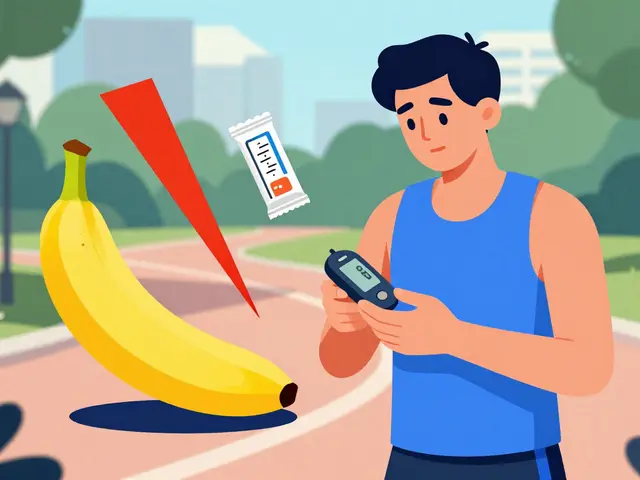
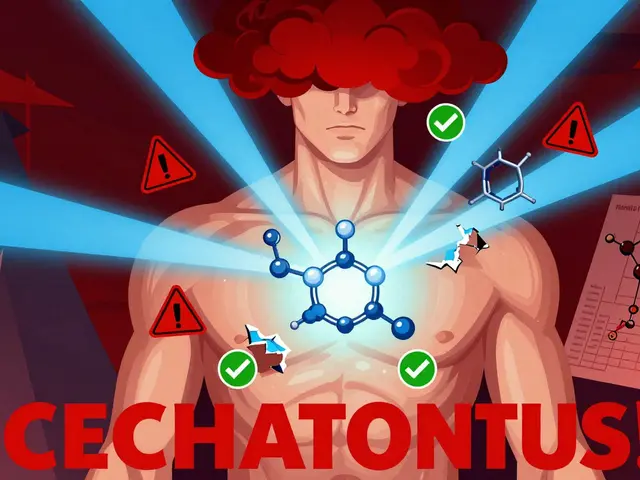

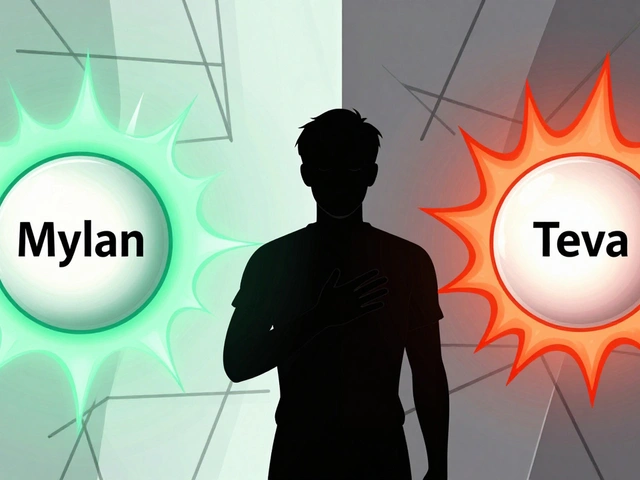

10 Comments
People who ignore basic physiology when dealing with swelling are practically asking for trouble. The body’s fluid balance isn’t something you can just “wing” by slapping on a bandage and hoping for the best. If you’re experiencing persistent edema, you have a moral obligation to seek professional evaluation rather than relying on vague internet tips. Pretending that a quick home remedy will cure a heart‑failure‑related edema borders on negligence.
Hey, great rundown on the two types of swelling it really clears things up. I’ve always thought any puffiness was the same thing but now I see the difference between inflammatory and non‑inflammatory. Thanks for the practical tips on elevation and compression.
Well, look at that, you've just opened the floodgates to an endless stream of clinical trivia.
It’s almost as if the article wanted to turn a simple Reddit comment section into a medical textbook.
Yet, somehow the prose manages to stay polite while secretly mocking anyone who thinks swelling is just “a little puff”.
The distinction between inflammatory and non‑inflammatory edema is not just academic fluff, it actually determines whether you reach for ibuprofen or a diuretic.
If you’ve ever wondered why your ankle swells after a long flight, the answer lies in venous stasis, not in some mystical “air trapped in the tissue”.
The author even nailed the point that proper hydration can prevent the body from holding onto excess sodium like a miser hoarding coins.
Of course, “proper hydration” is a vague phrase that can be twisted into a guilt‑trip for anyone who forgets their water bottle.
Let’s not forget the classic warning about blood clots – because apparently we need a dramatic cliffhanger to keep readers awake.
The recommendation to elevate the limb above heart level for exactly fifteen minutes sounds like a prescription for a TV commercial.
And the cold pack rule- ten to fifteen minutes, wrapped in a cloth- is the culinary equivalent of “cook it for 5 minutes”.
I also appreciate the subtle nod to compression stockings, which somehow feels like an endorsement from the fashion police.
In the grand scheme of things, the article does a decent job of balancing scientific jargon with layman tips, which is no small feat.
However, the endless list of bullet points could have been shortened to avoid turning the comment section into a PowerPoint slide.
Still, if you’re looking for a quick refresher on why your leg is puffy, this post delivers the goods.
Just remember, if swelling persists beyond a few days, it’s not a “funny little bump” but a signal that your body needs professional help.
Bottom line: read, apply, and maybe laugh at how seriously we take our own edema, because life’s too short for needless swelling. 😊
Anyone who claims swelling is just a ‘harmless little puff’ is buying the same propaganda that tries to downplay real health crises in our nation. We need to stop letting foreign medical advice dictate how we treat our own bodies. This article finally calls out the lazy reliance on over‑the‑counter meds while ignoring the patriotic duty of proper medical supervision. Buck up, folks, and demand the care you deserve!
Great point about taking personal responsibility for health, and I love how you emphasized the need for professional supervision. Just a tiny tip: consider adding a comma after “lazy reliance on over‑the‑counter meds” for smoother reading. Keep spreading the message that we all deserve proper care!
Indeed, the suggestion to incorporate proper punctuation enhances clarity. One might also advise regular follow‑up appointments to monitor edema progression.
Listen up, if you’re battling swelling you’ve got to treat it like a training program-consistent elevation, movement, and pressure are non‑negotiable. Push yourself to do the calf pumps every hour and you’ll see results faster than you expect.
Your advice, while well‑intentioned, suffers from a complete lack of grammatical precision; “non‑negotiable” should be hyphenated and “you’ll” needs an apostrophe. Moreover, the tone borders on condescending, assuming everyone is lazy. A more nuanced approach would respect individual circumstances.
Honestly the whole debate is just a waste of time, people should just follow the doctor’s orders and stop over‑thinking. Simplicity is key, and your endless nitpicking does nothing but confuse the average reader.
Thanks for the awesome guide, feeling more confident about handling my ankle now! 🙌